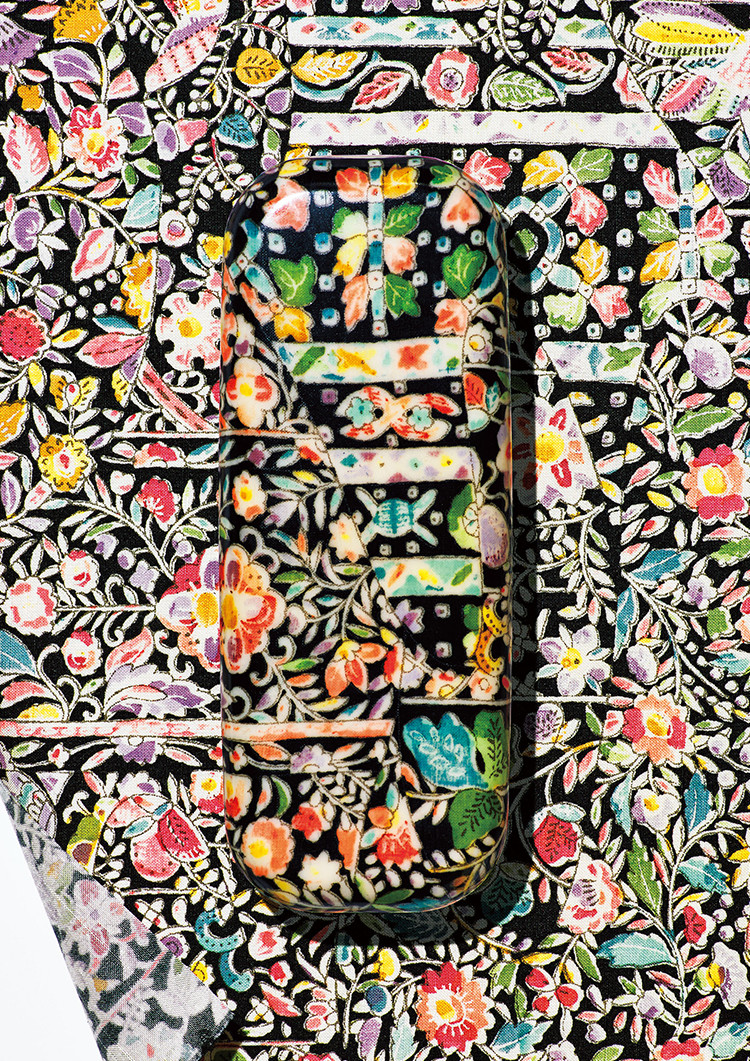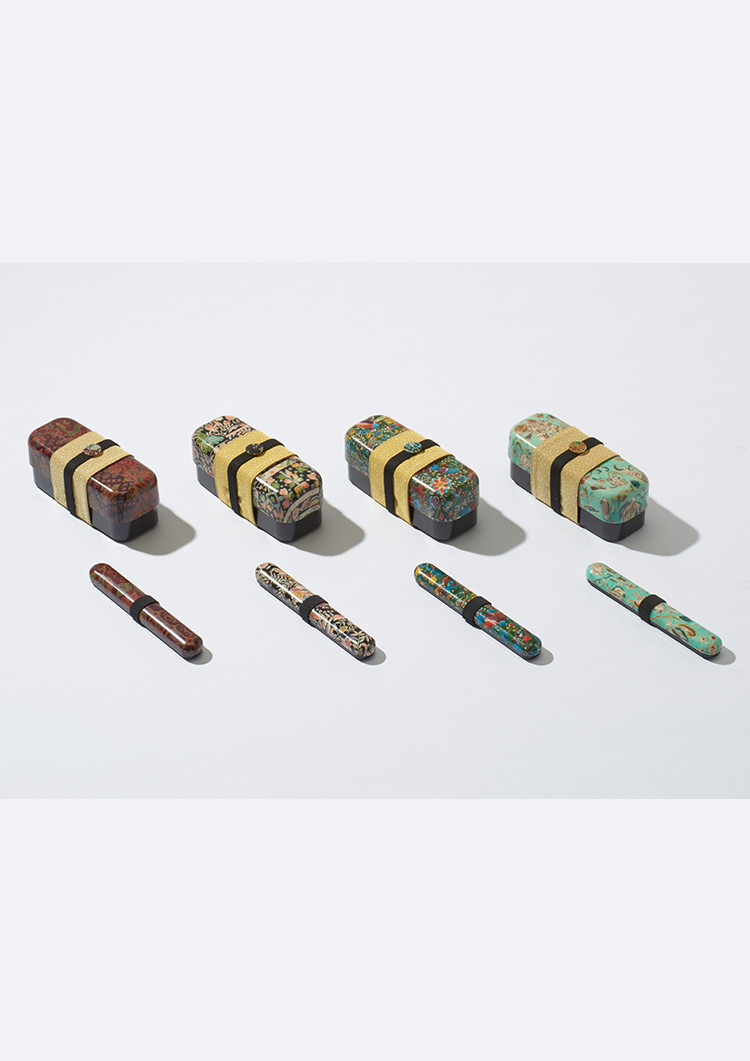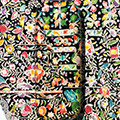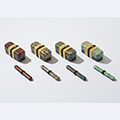Kimono Bento Tokyo
18 Edo Sarasa (Printed Silk Calico)Edo Sarasa to the east, to the west. Sarasa, which originated in India made its way to Japan to become its own form of stencil dyeing called “Edo Sarasa”. The exotic colours and patterns of Edo Sarasa, along side Oshima-tsumugi, have long been adored by people with refined tastes. Performing the stencil dyeing art of Edo Sarasa, includes the use of 30 stencils for regular patterns and hundreds more for complex patterns using Ise Katagami (Ise patterned paper). The stencils used for dyeing are washed and hung dry at the dyeing factory(a) and used preciously again. However, due to the overwhelming time and labour required for the dyeing process, the number of craftsmen who devote their efforts is dwindling year after year. And there are fewer opportunities to see Edo Sarasa nowadays. “Kimono Bento Tokyo” was born with the desire to re-shed light on Edo Sarasa. What’s confined in the lid of this bento box is genuine silk unsparingly dyed by an Edo Sarasa craftsman. The brilliant patterns add splendour to everyday lunchtimes. Furthermore, Sarasa also made its way west from India to become patterns such as Paisley in Europe. The romanticism in Sarasa, which travelled east and west to root itself in foreign lands to develop on its own, is hidden in this one piece of fabric.
- Chopsticks box
- Size: W190mm × H26mm × D30mm
Materials: Unsaturated polyester,
silk(Lid), ABS resin(Body)
- Bento (packed lunch) box
- Size: W188mm × H70mm × D75mm
Materials: Unsaturated polyester,
silk(Lid), ABS resin(Body)
*The information on this site is as of December 2017.
*Sizes, colours and shapes of the actual products may differ slightly as they are handmade.
*Product specifications and suggested retail prices may change without prior notice. Prices shown are all tax exclusive suggested retail prices.






